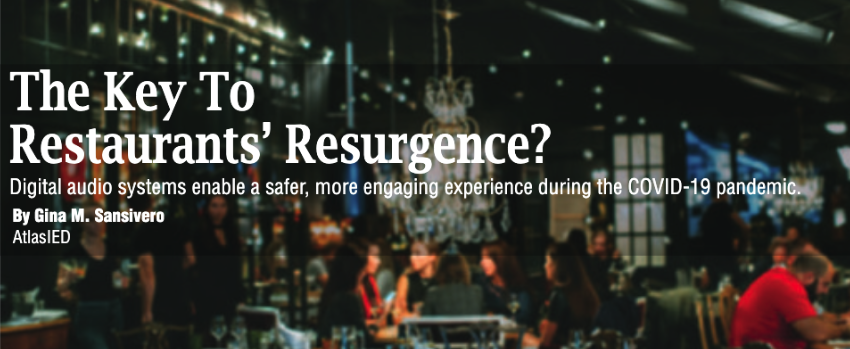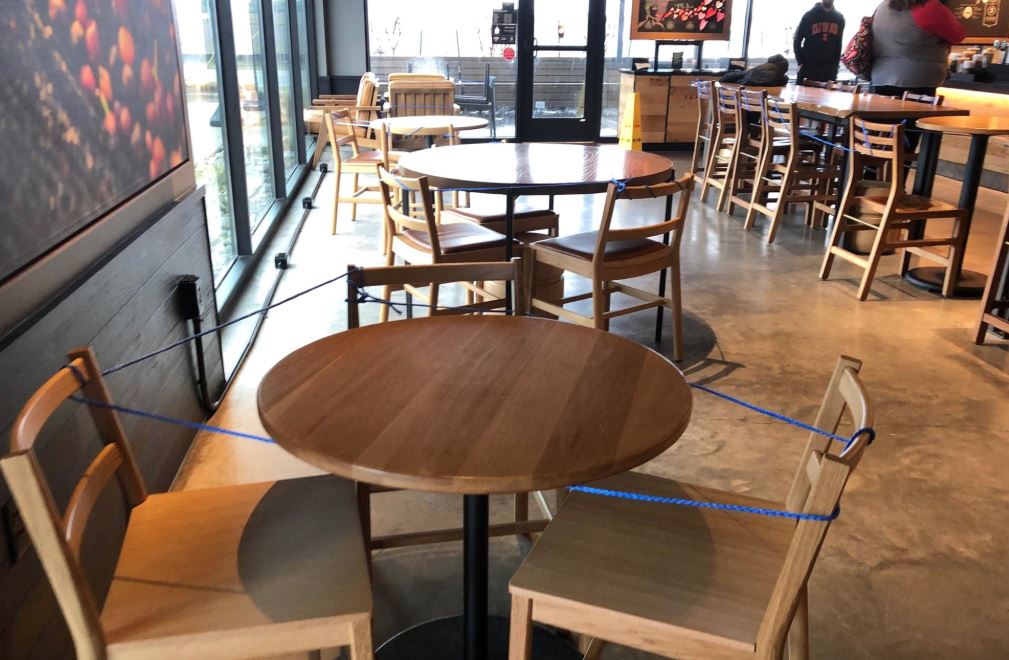This post was originally published in Sound and Communications, October 2020

Thought leadership – how digital audio systems are helping the hospitality industry recover and thrive during the pandemic By Gina Sansivero, Vice President of Marketing and Corporate Communications, AtlasIED

The COVID-19 pandemic has affected every sector of the hospitality industry. Restaurants, in particular, have felt the sting, as business came to a screeching halt temporarily while families went into hard lockdown. It didn’t take long, however, before restaurant owners started implementing new take-out strategies to stay afloat. When lockdowns lifted and consumers could once again dine in, new seating arrangements were devised to maintain proper social distancing. Digital menus and online ordering supplanted traditional paper menus and face-to-face contact with wait staff. Nimble and resilient, restaurant owners, managers, and staff have adapted admirably to COVID mandates. But the road to recovery isn’t over. As businesses continue to move forward, digital audio systems can play a vital in their success. Here’s how:
Music Maintains Customer Engagement and Retention
Background music has a profound effect on restaurant patrons. The type of music, the volume level, and when and where it’s played can provide a better customer experience, leading to bigger sales, greater customer engagement and retention, and repeat business. Results of a study of consumer behavior in a wine shop, for example, reveal that customers will purchase more expensive bottles when the background music switches from Top 40 tunes to classical music. This same logic can be applied to restaurants: Play a genre of music that matches your establishment’s persona, and patrons will likely spend more.
The tempo of background music also has a strong impact on customer behavior. According to statistics gathered by the National Restaurant Association, customers chew food 30% faster when they listen to lively music, decreasing dining time and increasing table turnover. On the flip side, slower music encourages patrons to stay longer, leading to 23% higher ticket sales.
Choosing the appropriate type of music to distribute to speakers via a digital audio system is a solid first step. Being able to easily manage and control that music offers additional benefits to restaurant owners, managers, and staff. The ability to schedule different types of music to play at different times of the day, for example, can turn tables quickly during the lunch rush but keep customers at their seats longer during dinner. The volume of the music is another important consideration. Played loudly, music gets people moving, but restricts intimate conversation. A digital audio system helps restaurant managers achieve a perfect balance—without having to continually adjust the volume manually throughout their shift. The volume can be programmed to adjust according to a preset schedule, as well as play in certain pre-specified audio zones. For example, in a casual dining area, the system could distribute music at a higher volume while playing the same piece of music at a lower volume in other zones of the restaurant. Additionally, ambient noise sensors can be integrated to signal the system to boost the volume to compensate for high ambient noise while the restaurant is busy and loud, then lower the volume automatically as the crowd dies down.
Advanced Technologies Minimize Safety Risks
Through the integration of touchless controls, automation, and artificial intelligence, digital audio systems can dramatically minimize the spread of germs, creating a healthier dining atmosphere for both customers and staff. An app or web browser on personal smartphones can grant authorized employees control over the digital audio system. No longer do managers and staff need to touch the manual controls, lending a more hygienic alternative. Moreover, this mode of control enables immediate response to customer requests; for example, volume can be lowered or raised on the spot, resulting in greater customer satisfaction.
![]()
Leveraging this hands-off approach are digital audio systems that learn and adapt to changes in the environment. Through data collected and transmitted by intelligent noise sensors, the system comes to recognize patterns like the need to raise the volume at a bar during happy hour to compensate for high levels of ambient noise. Without any human interaction, the digital audio system evokes an ideal atmosphere for customers.
Music isn’t the only type of audio that is helpful to hospitality establishments. In the wake of COVID, additional security precautions are necessary, and digital audio systems can dispatch audible reminders to patrons to enter and exit through certain doors, practice social distancing, and wash their hands, for example. These messages can be distributed to only zones like bathrooms and only when triggered by a motion sensor so that customers aren’t bothered with the cues while dining. Other messages can notify customers of daily specials and upcoming events, increasing customer engagement and repeat business.
Digital audio systems provide restaurants a highly effective platform on which to rebuild their businesses. Enabling customized, automated delivery of music and messages, as well as touchless control of system settings, they help foster greater customer satisfaction, engagement, and retention; bigger sales and faster table turnaround, all while maintaining the health and well-being of patrons and employees and making the guest experience more memorable.


